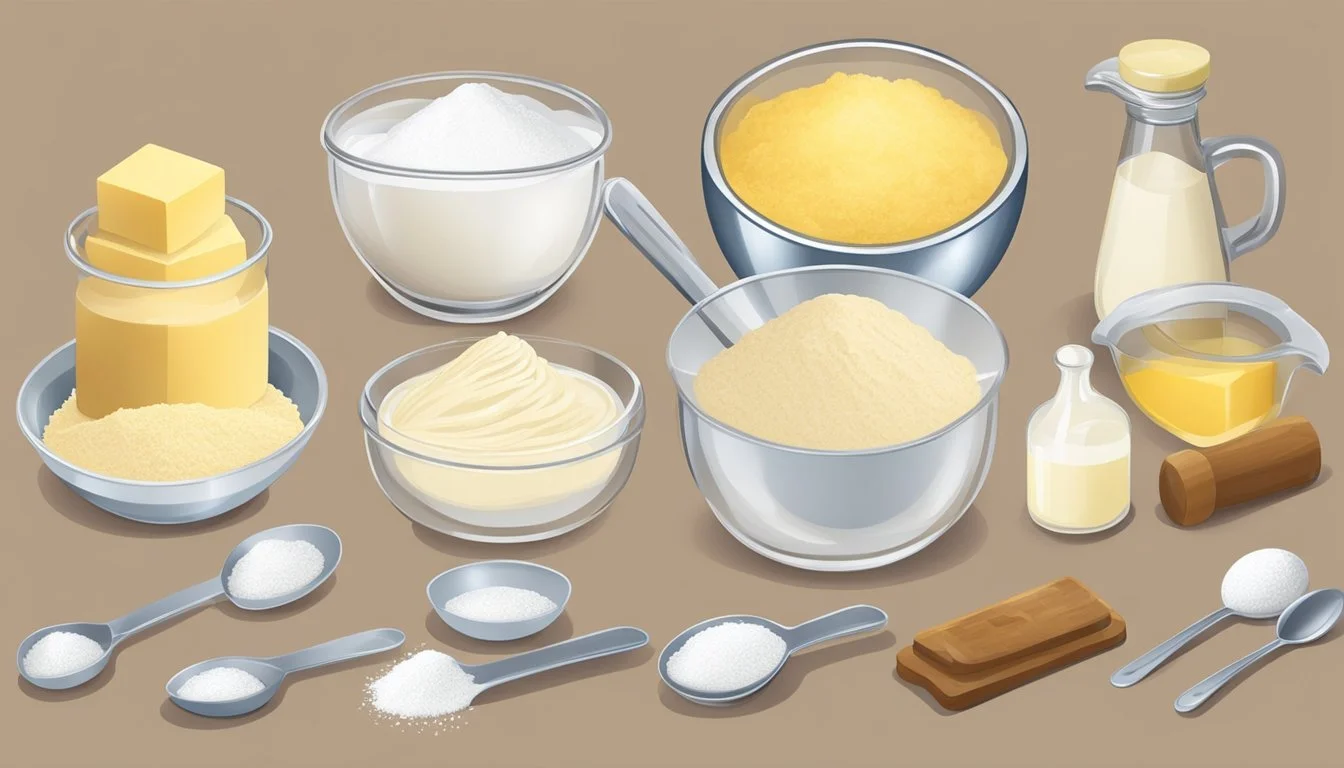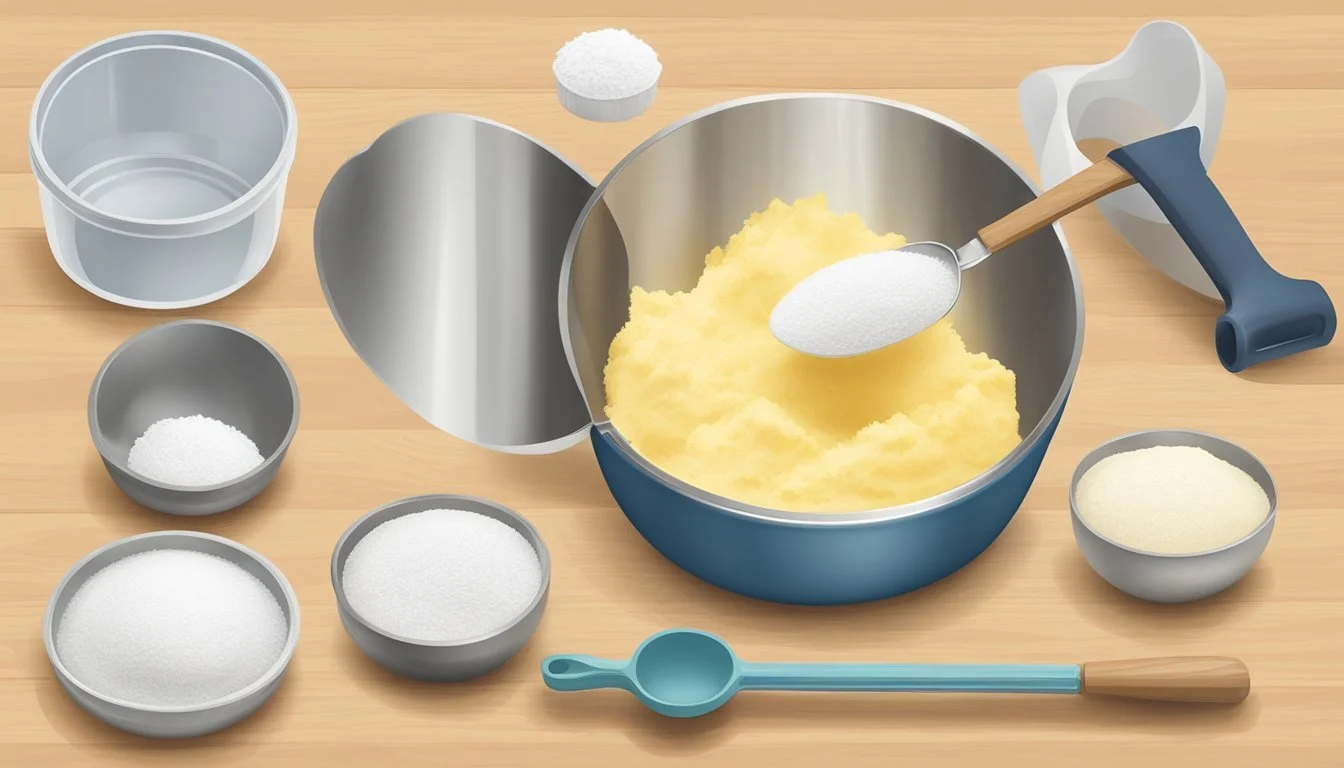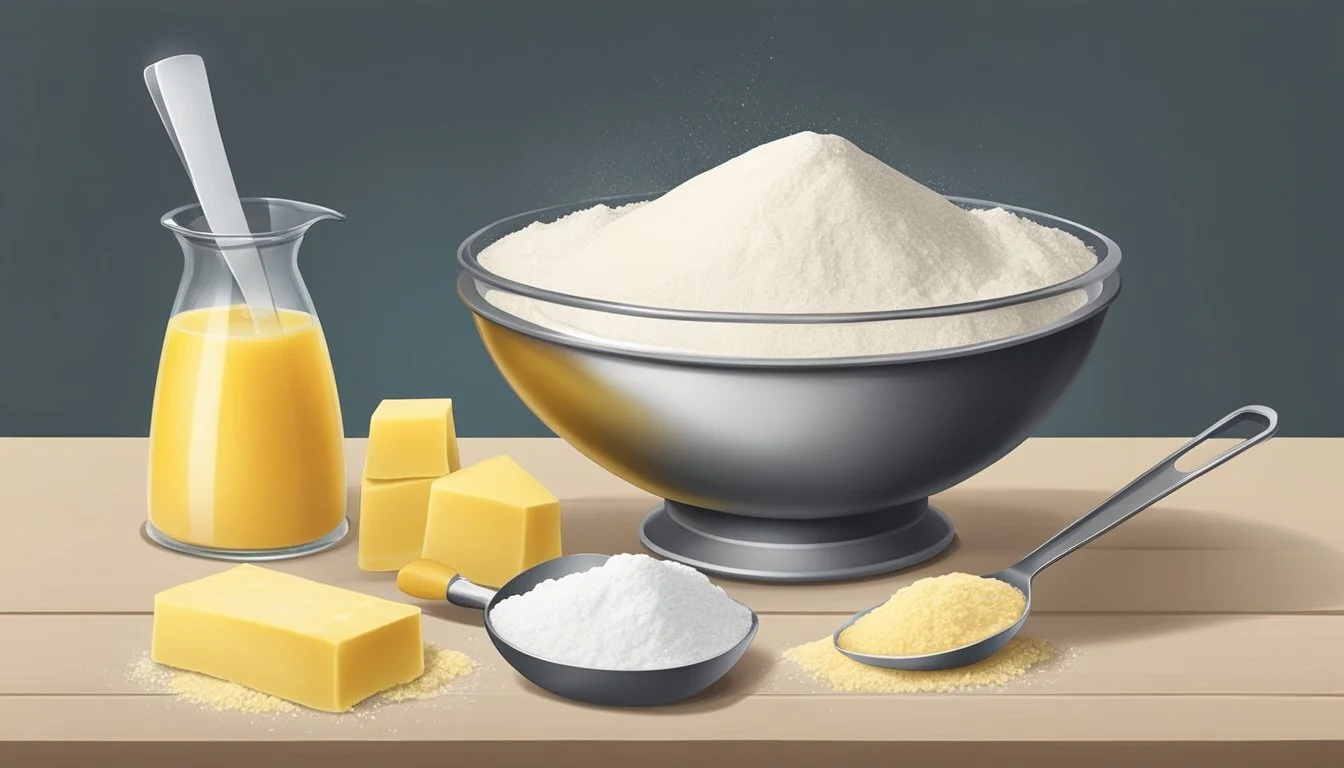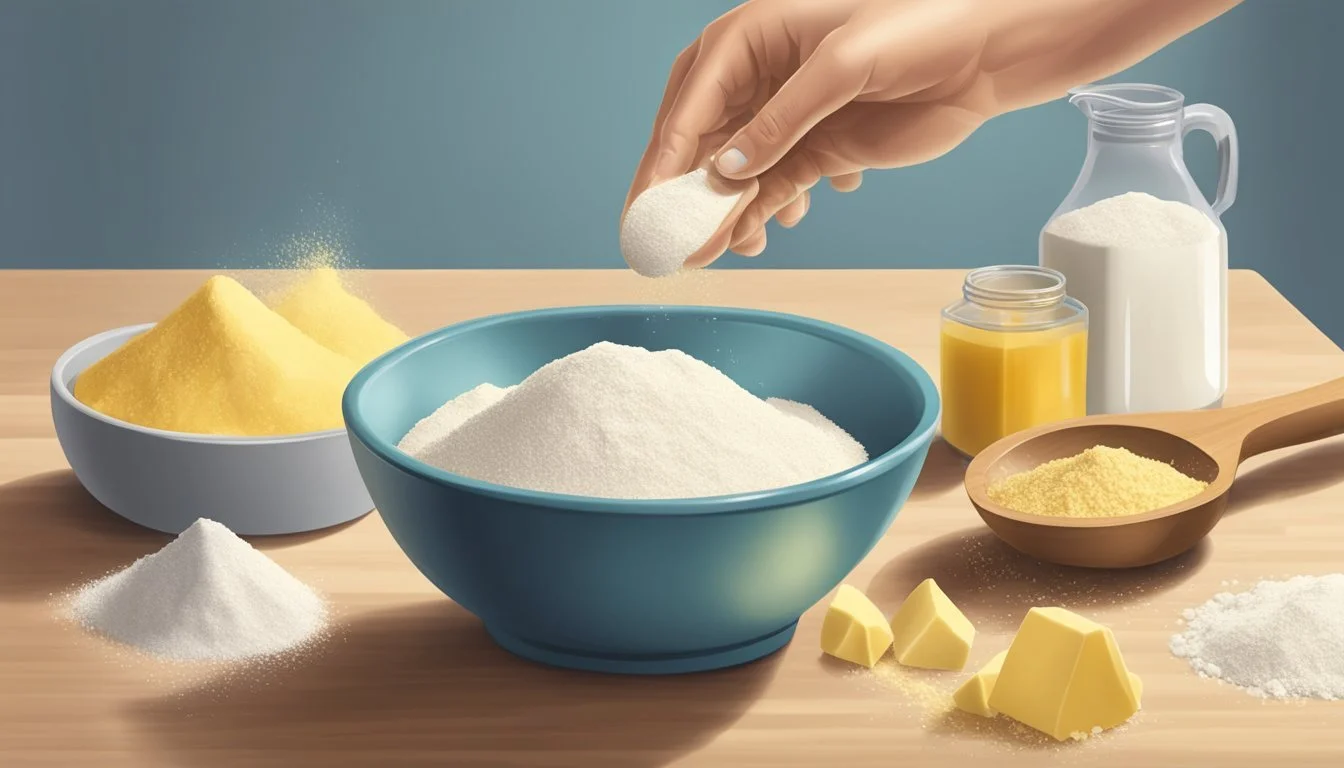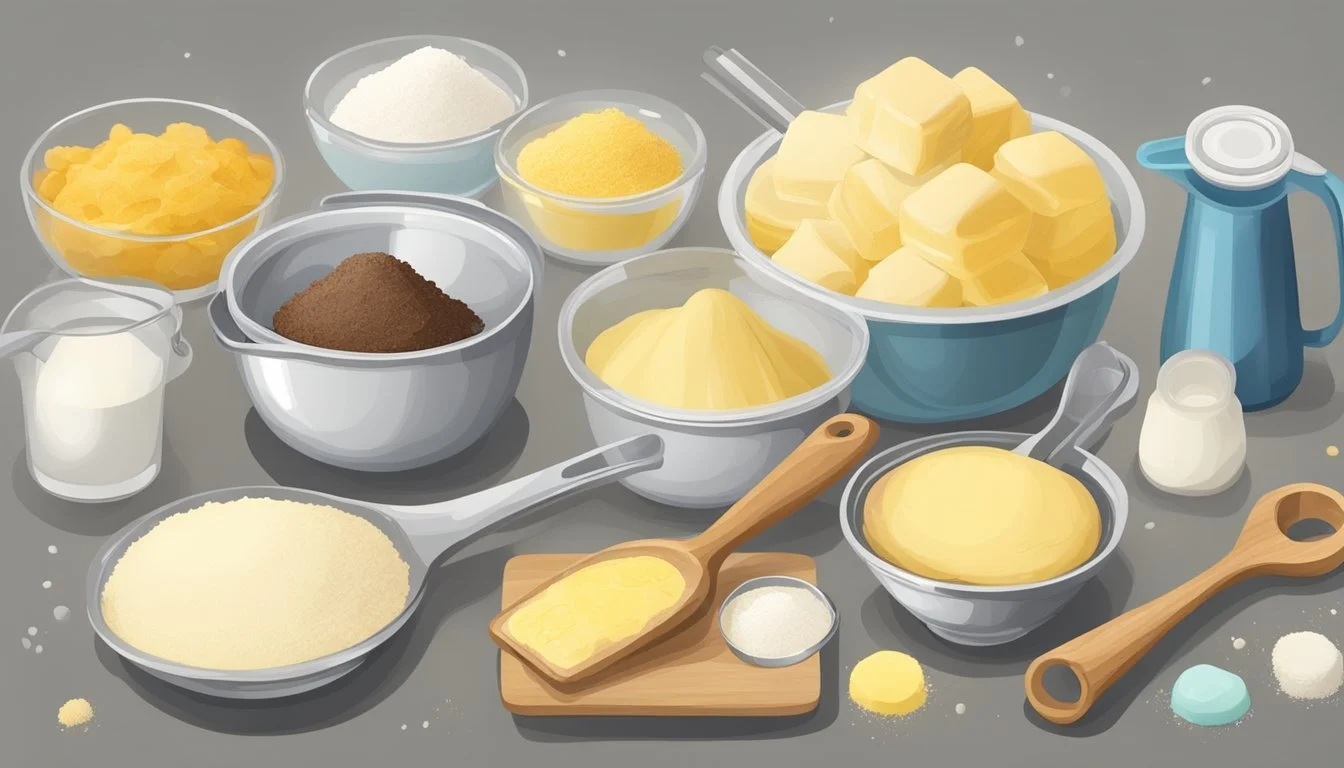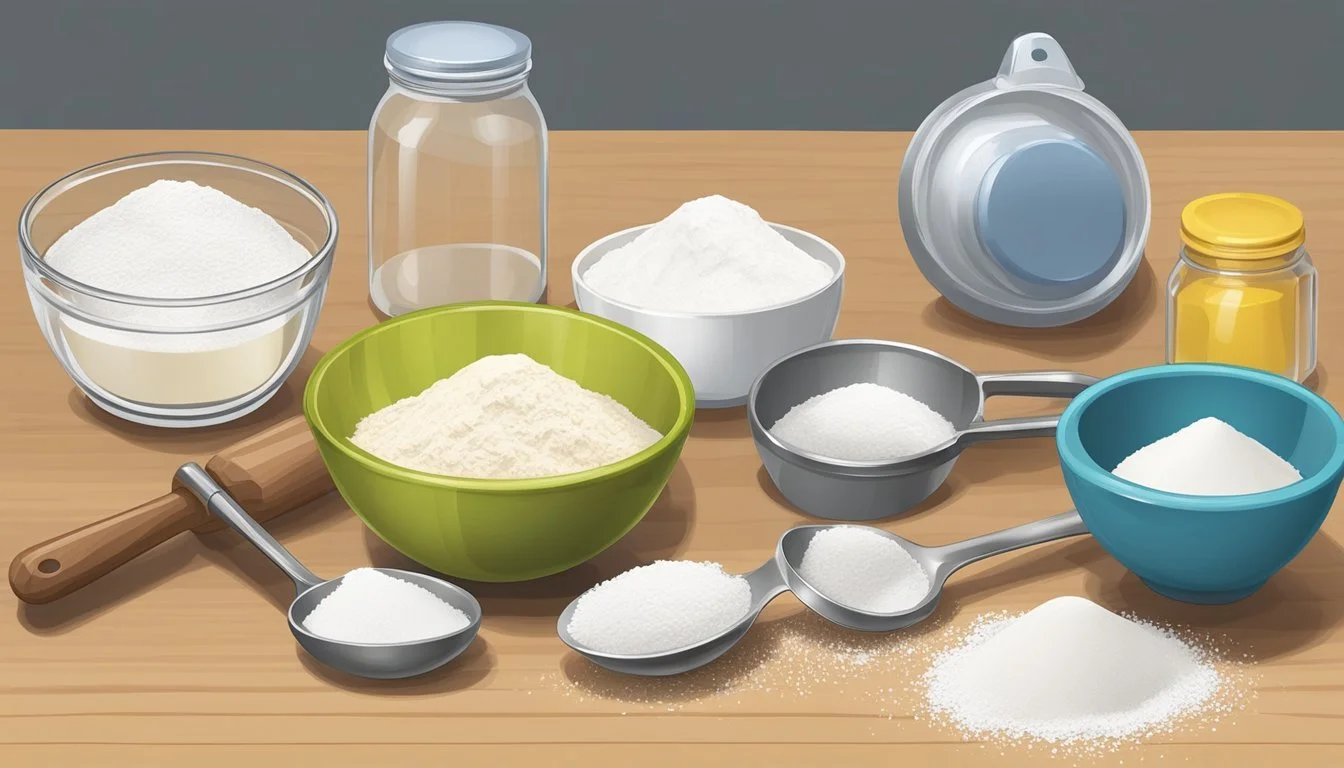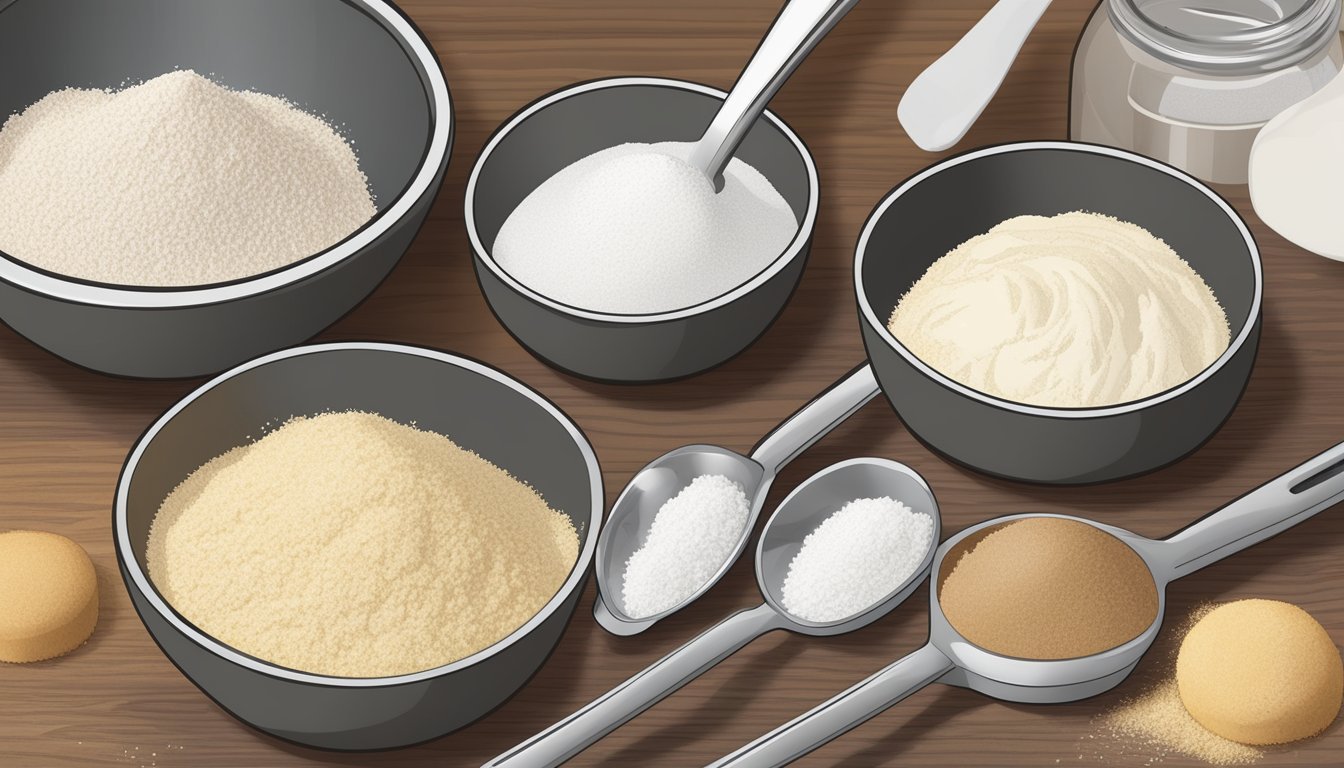How to Measure Ingredients for a Homemade Scone Topping
Precision Baking Tips
Creating the perfect scone topping begins with precise measurement of ingredients, a crucial step that sets the foundation for a delectable and consistent outcome with each batch. When developing the topping for homemade scones, attention to detail ensures a balance of flavors and textures. It's essential to use the correct tools, like a digital scale for weighing dry ingredients, to achieve accuracy. Measuring by weight rather than volume leads to more reliable results, as it accounts for variable factors like ingredient density and environmental conditions.
Beyond the basics of flour and sugar, scone toppings can include a variety of ingredients such as confectioners' sugar, spices, or glazes that complement the scone's flavor. Each ingredient must be carefully measured to harmonize with the scone's base. The topping not only adds visual appeal but also enhances the overall taste experience.
To measure liquids like cream or melted butter used in the topping, one should opt for clear measuring cups with spouts to ensure precise pouring. As with any pastry, the temperature of the ingredients impacts the final texture; for instance, cold cream could yield a different finish compared to room temperature cream. Therefore, one must follow the recipe's temperature guidelines for each component to have the desired effect on the scone's topping.
Understanding Scone Ingredients
For homemade scones that are both delicious and textured perfectly, one must give special attention to measuring ingredients accurately. Accurate measurements ensure a balance between a tender crumb and structural integrity.
Choosing Flour
The foundation of scone dough is flour, where all-purpose flour is most commonly used for its moderate gluten content. For a tender scone, some bakers may opt for cake flour, which has lower gluten content, creating a finer crumb.
Selecting Fats
Fats, like unsalted butter, are critical for flaky layers and rich flavor. Butter should be cold and cut into small pieces before incorporating into the dough to maintain texture. Alternatively, one might use fats like shortening or lard for varying textures.
Incorporating Sweeteners
Sweetness in scones can come from granulated sugar for a neutral sweetness, or honey for more flavor complexity. Sweeteners not only affect taste but also contribute to the golden color and tender texture when baked.
Liquids for Moisture
Liquids are necessary to bring the dough together, with choices ranging from whole milk to buttermilk, which can also add a tangy flavor, or heavy cream for richness. The proper balance of liquid will yield a dough that is moist but not sticky.
Rising Agents
To ensure the scones rise, one must incorporate rising agents like baking powder; it's often used in scone recipes for its reliable leavening. Yeast is less common but can be used in certain scone-like pastries for a different texture.
Flavor Enhancers
Flavorings such as vanilla extract, cinnamon, and citrus zests like orange or lemon zest, are subtle yet significant. They should be fresh and of good quality to infuse the scones with nuanced flavors.
Mix-ins and Toppings
A variety of mix-ins can be added to the dough, from chocolate chips to berries, dried cranberries, nuts, or raisins. Each addition should be folded in carefully to avoid overworking the dough, and considers uniform distribution to ensure every bite has a blend of flavors and textures. Toppings can range from a simple brush of milk for browning to a sprinkle of coarse sugar for crunch.
Preparing the Dough
Creating the perfect scone topping begins with preparing the dough, a meticulous process that involves accurate measurements and specific techniques to ensure a tender and flaky texture.
Measuring Ingredients Accurately
Accurate measurement of ingredients is crucial to the success of a scone recipe. Ingredients should be measured using the following tools:
Flour: Spooned into a measuring cup and leveled off with a straight edge, never scooped directly, which can lead to over-measuring.
Sugar and salt: Measured in dry measuring cups or with measuring spoons, making sure to level the top.
Cold butter: Cut into cubes and measured by displacement in a measuring cup with water or on a kitchen scale.
Mixing Techniques
The technique used to mix scone dough affects its texture:
Cold ingredients: Ensure that butter and any liquid ingredients are kept cold; this helps create a flaky texture upon baking.
Food processor: Can be used to pulse the dry ingredients with cold, cubed butter until a coarse, crumbly texture is achieved.
Gentle folding: When adding wet ingredients to dry, fold gently to avoid overworking the dough which keeps scones tender.
Add-ins: If the recipe calls for add-ins like fruit or nuts, they should be folded in last to avoid crushing or releasing excess moisture into the dough.
Resting and Chilling Dough
Resting the dough allows the gluten to relax, which contributes to a more tender bite:
Rest time: Allow dough to rest for at least 15 minutes after mixing.
Chilling: A chilled dough, either in the freezer for 30 minutes or fridge for an hour, results in a better rise and flaky texture.
Rolling and Shaping
Proper rolling and shaping are key for even baking:
Thickness: Roll out the dough to a consistent thickness, about 3/4 inch, to ensure scones cook evenly.
Shapes: For precise shapes, use a sharp knife or pastry cutter; square scones can be cut from a rectangle and circular ones from rolled-out dough using a cutter.
Using Proper Baking Tools
The right baking tools contribute to the scone's final quality:
Parchment paper: Lining the baking sheet with parchment paper prevents sticking and allows for easy removal.
Cooling rack: After baking, transferring scones to a cooling rack helps avoid a soggy bottom and maintains their texture.
Egg Wash for Golden Hue
An egg wash prior to baking gives scones a golden-brown finish:
Egg mix: Beat an egg with a tablespoon of water or milk and brush lightly over the tops of the scones.
Application: Use a pastry brush for an even application, being careful not to let the wash drip down the sides which can impede the rise.
Baking the Scones
Proper baking techniques are crucial in achieving the best texture and flavor in scones. Following specific steps for preheating, oven placement, and baking time ensures crispy, flaky, and buttery scones every time.
Preheating and Oven Tips
Preheating the oven is a step one should never skip. The ideal temperature for baking scones is usually around 425°F (218°C). Placing a rack in the upper third of the oven helps in even browning. Additionally, one can place a baking stone in the oven during preheating to help distribute heat evenly.
Ensure that the oven reaches the full temperature before baking.
Consider an oven thermometer to check accuracy.
Placement and Baking Time
The positioning of scones on the baking sheet can affect how they bake. They should be evenly spaced to allow for good air circulation, leading to an even bake. Typical baking time ranges from 18 to 23 minutes, though it varies based on the size and thickness of the scones.
A standard guideline for placement is at least 2 inches apart on the baking sheet.
Rotate the baking sheet halfway through to promote uniform baking.
Checking for Doneness
Scones are done when they have a light golden brown color and firm edges. When gently pulled apart from each other, a baked scone's edge should not appear wet or unbaked. One can also insert a toothpick into the center; if it comes out clean, the scones are ready.
Look for a light golden hue and crisp edges.
Perform the toothpick test for an additional check.
Storing and Preserving Scones
Proper storage extends the enjoyment of scones by maintaining their texture and flavor. Adhering to the correct techniques ensures these treats remain delightful until ready to serve.
Cooling and Storing at Room Temperature
Once scones have finished baking, they should be transferred to a cooling rack to cool to room temperature. This prevents condensation from making them soggy. For short-term storage of about two to four days, scones can be kept in an airtight container. Lining the container with paper towels helps to absorb excess moisture. Always ensure scones are completely cool before sealing them away to maintain freshness.
Freezing Techniques
For longer storage, scones can be frozen either before or after baking. To freeze scones:
Before baking: Place the shaped dough on a baking sheet and freeze until firm. Then transfer to a freezer-safe container, separating layers with plastic wrap.
After baking: Wrap each scone individually in plastic wrap, then place in an airtight container or freezer bag.
Label containers with the date of freezing. Scones can be kept frozen for up to three months.
Reheating for Fresh Taste
When one desires to enjoy a scone that has been stored, reheating can restore a warm, toasty quality. To reheat:
Room temperature: Unwrap the scones and let them come to room temperature.
Oven: Place the scones in a preheated oven for a few minutes until warmed through.
If reheating from frozen, bake directly from the freezer, adding a few extra minutes to the baking time.
Exploring Scone Variations
Scone toppings offer a delightful way to enhance the basic recipe, allowing bakers to create numerous flavors ranging from sweet delicacies to savory treats. This section provides guidance on how to measure ingredients for a variety of homemade scone toppings.
Sweet Scone Options
Sweet scones are versatile, accommodating an array of additions. To make chocolate chip scones, one typically folds in 1/2 to 3/4 cup of chocolate chips into the scone batter. For berry scones, incorporating 3/4 cup of fresh or dried berries ensures bursts of flavor. Using dried fruit, such as raisins or apricots, entails chopping the fruit and measuring out a 1/2 cup to mix into the dough.
Savory Scone Flavors
For a savory twist, options include cheese scones and those infused with herbs. Cheese scones benefit from the inclusion of 1/2 to 3/4 cup grated cheese like sharp cheddar or Gruyère. Herbs should be measured carefully; 1 to 2 tablespoons of finely chopped fresh herbs or 1 to 2 teaspoons of dried herbs are sufficient to impart flavor without overwhelming the scone.
Gluten-Free and Vegan Alternatives
Those requiring gluten-free scones can substitute standard flour with an equal amount of alternative flours like almond or coconut flour. Vegans can opt for plant-based alternatives; using 1/4 cup of vegan butter and plant milk in place of dairy, and flax or chia seeds as a binding agent.
Cultural Variations
Cultural takes on scones include English scones which are typically less sweet and served with clotted cream and jam. American scones are often sweeter and can be larger. Both styles call for accurate measuring of ingredients to maintain texture, with American scones often using more sugar—around 2 to 4 tablespoons.
Seasonal and Festive Scones
Seasonal flavors add festive cheer to scones. Pumpkin scones can be created by adding 1/2 cup of pumpkin puree and spices such as cinnamon and nutmeg. For a holiday twist, gingerbread scones incorporate molasses and ginger, often using 1/4 cup molasses and 2 teaspoons ground ginger for the characteristic flavor.
Serving and Pairings
When serving scones, the perfect topping or accompaniment can elevate a simple tea snack into a memorable culinary delight. This section will guide readers through selecting harmonious additions for any scone variety, appropriate beverages, and tips for setting the table to enrich the overall afternoon tea experience.
Accompaniments for Scones
A classic scone serves as a blank canvas for a variety of add-ins that enhance its flavor. Clotted cream and jam remain the quintessential toppings for any scone, where the richness of the cream contrasts with the fruitiness of the jam. For a zesty twist, a drizzle of lemon juice can brighten the paired flavors.
Plain or Whole Wheat Scone: Ideal with butter and honey
Vanilla Scone: Best enjoyed with clotted cream and strawberry jam
Savory Cheese Scone: Complement with cream cheese and smoked salmon
Beverages to Complement
Selecting the right beverage can complement the richness and texture of scones. For a morning indulgence, a robust coffee pairs well with breakfast scones. Alternatively, tea varieties such as Earl Grey or Assam enhance the afternoon tea experience.
Breakfast Scones: Rich coffee or a smooth cappuccino
Brunch and Afternoon Tea: A selection of black or herbal teas
Setting the Table for Afternoon Tea
The ambiance and decor are integral to the afternoon tea experience. Characters should set the table with fine china and linen, creating an inviting and elegant atmosphere. A well-laid table reflects the importance of this social event, making the scone pairing even more delightful.
Decor: Fresh flowers and delicate teaware
Ambiance: Soft classical music in the background
Advanced Tips and Tricks
In pursuit of the perfect homemade scone topping, one must consider texture and flavor intricacies, alongside decorative appeal. This section delves into the nuances of creating a superb finish that elevates the humble scone.
Achieving the Perfect Texture
To attain a tender and flakier topping, precision in measuring fat content is critical. They can work butter into their dry ingredients using a pastry blender until the mixture resembles coarse crumbs. For a more refined texture, one can sift their dry ingredients, ensuring that the leavening agents, like baking powder, are evenly distributed.
Chill the butter: Keeping butter cold until baking prevents early melting and results in a flakier texture.
Do not overwork the dough: They should handle the dough minimally; over-kneading can toughen the texture.
Flavor Intensification
A scone's flavor can be enhanced through the incorporation of spices, citrus zest, or extracts. Here are specific tips for maximizing flavor:
Citrus zests: Adding lemon or orange zest can provide a refreshing citrus note.
Spice selection: Infusing their topping with spices such as cinnamon or nutmeg can add warmth.
Extracts: Vanilla or almond extracts can be measured and added to impart a deeper flavor profile.
Decorative Toppings and Glazes
The final touch to any scone is the application of a visually appealing and tasteful topping or glaze. Here's how one can master these decorative elements:
Sugar choices: Sprinkling coarse sugar provides crunch and a professional look.
Glazes: For glazes, they should combine powdered sugar with a small amount of milk or citrus juice to achieve a thick yet pourable consistency.
Ingredient Measurement Purpose Coarse Sugar As needed for sprinkling Provides texture and sparkle Powdered Sugar To taste for glaze Sweetness and glaze formation Citrus Juice (optional) A few teaspoons for glaze Flavor enhancement and consistency
These advanced tips and tricks were carefully crafted to help home bakers elevate their scone-making game with confidence and expertise.
Engaging With Readers
To ensure that a homemade scone topping recipe resonates with home bakers, writers can prioritize engaging with their audience. They might consider several strategies to achieve this goal.
Firstly, encouraging feedback is crucial. Whether through a newsletter requesting readers' input or a comment section beneath the recipe, asking for readers' experiences and suggestions can build a collaborative community. A simple table can be introduced in the newsletter for readers to report measurements that worked for them:
Ingredient Measurement Powdered Sugar 2 cups Heavy Cream To desired consistency Extract or Flavor 2 teaspoons
Moreover, responding to comments provides an opportunity to clarify steps, offer alternatives, and acknowledge readers' successful adaptations. This interaction exhibits a writer's expertise and commitment to their readers' baking success.
A bulleted list can help emphasize points for readers about engaging:
Sign up for the newsletter for exclusive tips.
Share your feedback to improve recipes.
Read and respond to comments to aid fellow bakers.
Lastly, maintaining a neutral and clear tone establishes credibility. One should avoid being overly colloquial or technical, as the goal is to communicate effectively with a diverse audience. Addressing common measurement queries and offering solutions positions a writer as a knowledgeable and reliable guide in the kitchen.


